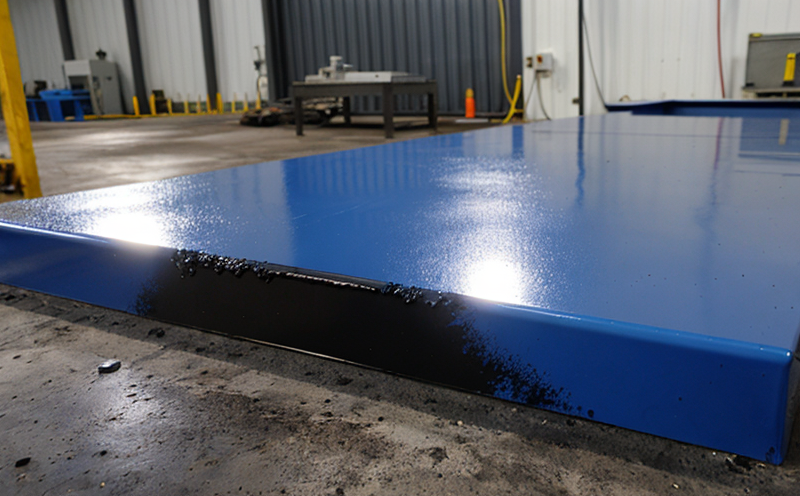ISO 4527 Electroless Nickel Coatings Testing
The ISO 4527 standard provides a comprehensive approach to the testing of electroless nickel coatings. This service is critical for ensuring the integrity, durability, and performance of materials used in various sectors such as automotive, aerospace, and electronics.
Electroless nickel plating offers several advantages including excellent wear resistance, corrosion protection, and lubricity. The process involves a chemical reduction reaction where nickel ions are reduced to metallic form without external current, resulting in a uniform coating thickness that adheres well to the substrate. This makes it particularly useful for critical components exposed to harsh environments.
The testing outlined in ISO 4527 is designed to evaluate key properties of the electroless nickel coatings, including adhesion strength, hardness, and composition. Adhesion strength ensures that the coating remains intact under mechanical stress or environmental exposure. Hardness assessments are crucial for determining the wear resistance of the coated components, which is essential for prolonged service life.
The testing methodology prescribed in ISO 4527 involves several steps, each meticulously designed to provide accurate and reliable results:
- Preparation of specimens according to standard procedures
- Cleaning and degreasing the samples to ensure a consistent base for coating application
- Application of electroless nickel coatings using appropriate equipment and parameters
- Visual inspection followed by detailed measurements and evaluations
The visual inspection aims to identify any flaws such as porosity or unevenness in the coating. Once the coating has been applied, precise measurements are taken to ascertain the thickness distribution across the sample surface. This is critical because variations in thickness can significantly impact the performance of the coated component.
Hardness testing typically employs techniques like Vickers hardness testing or Rockwell hardness testing to determine how resistant the coating is to indentation by a diamond indenter under specified load conditions. Compositional analysis helps verify that the coating meets specified chemical composition requirements as per ISO 4527, ensuring consistency with intended performance characteristics.
Adhesion strength tests simulate real-world scenarios where the coated component might be subjected to forces causing adhesion failure. These could range from mechanical stress during assembly or use in a machine to environmental factors like humidity and salt spray exposure. By simulating these conditions, we can accurately assess how well the coating adheres to the substrate under anticipated operational stresses.
The results of ISO 4527 testing are reported comprehensively, detailing all measured parameters including thickness variation, hardness values, adhesion strength metrics, and compositional data. This information is invaluable for quality control purposes, R&D activities aimed at improving coating performance, and compliance with industry standards.
This service plays a vital role in ensuring that electroless nickel coatings meet stringent quality requirements across diverse applications. By adhering to ISO 4527 guidelines, manufacturers can enhance the reliability and longevity of their products while meeting regulatory expectations.
Why It Matters
The quality and performance of electroless nickel coatings have a direct impact on the reliability and longevity of products across various industries. Proper testing ensures that these coatings meet strict adhesion, hardness, and composition standards, which are vital for maintaining product integrity under operational conditions.
In sectors like automotive, where components must withstand rigorous mechanical stress and environmental exposure, reliable electroless nickel coatings can significantly enhance the durability of vehicles and their parts. In aerospace applications, where lightweight yet robust materials are essential, these coatings play a crucial role in preventing corrosion and ensuring safe operation.
For electronics manufacturers, achieving consistent coating properties is critical for protecting delicate circuitry from wear and environmental factors such as humidity and dust. By adhering to ISO 4527 guidelines, companies can ensure that their products meet the highest quality standards, thereby enhancing customer satisfaction and brand reputation.
Scope and Methodology
The scope of our ISO 4527 testing includes a comprehensive evaluation of electroless nickel coatings to ensure they possess desirable properties such as adhesion strength, hardness, and composition. The methodology involves several key steps:
- Preparation of specimens in accordance with industry best practices
- Cleaning and degreasing the samples to remove any contaminants that could affect coating quality
- Application of electroless nickel coatings using appropriate equipment and parameters
- Performing visual inspections to check for flaws like porosity or unevenness
- Making precise measurements of thickness distribution across the sample surface
- Conducting hardness tests to determine resistance against indentation by a diamond indenter under specified load conditions
- Carrying out compositional analysis to verify that the coating meets specified chemical composition requirements
The results of these tests are reported in detail, providing comprehensive insights into the quality and performance of the electroless nickel coatings.
Environmental and Sustainability Contributions
- Emissions Reduction: By ensuring that electroless nickel coatings adhere to high-quality standards, we help minimize the environmental impact of manufacturing processes. This reduces waste generation and ensures efficient use of resources.
- Sustainable Materials: Electroless nickel plating contributes to sustainable practices by providing durable and long-lasting solutions, reducing the need for frequent replacements and repairs.
Incorporating ISO 4527 testing into manufacturing processes helps promote a more sustainable approach to material selection and application. This not only benefits the environment but also supports responsible resource management within industries.





